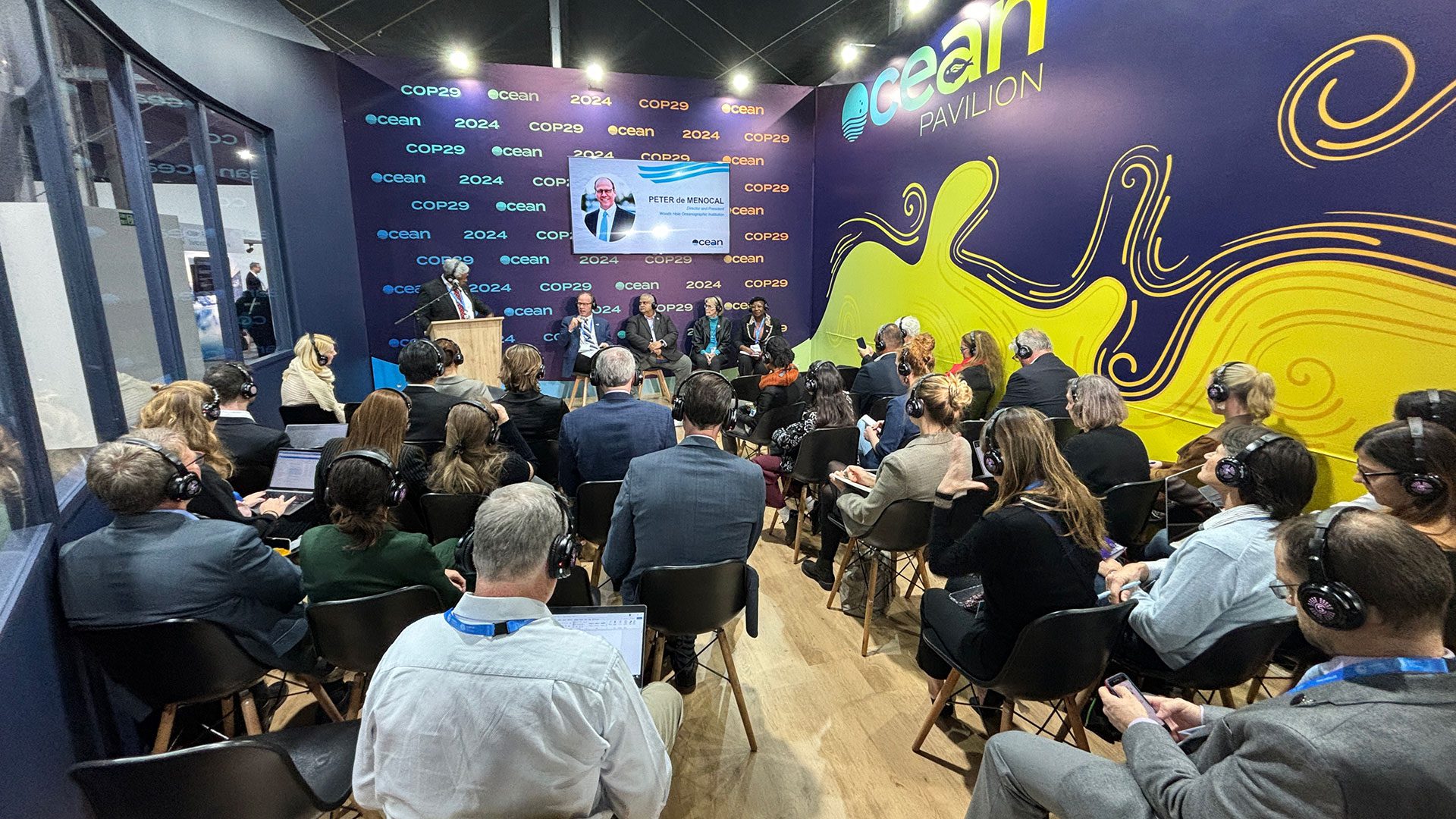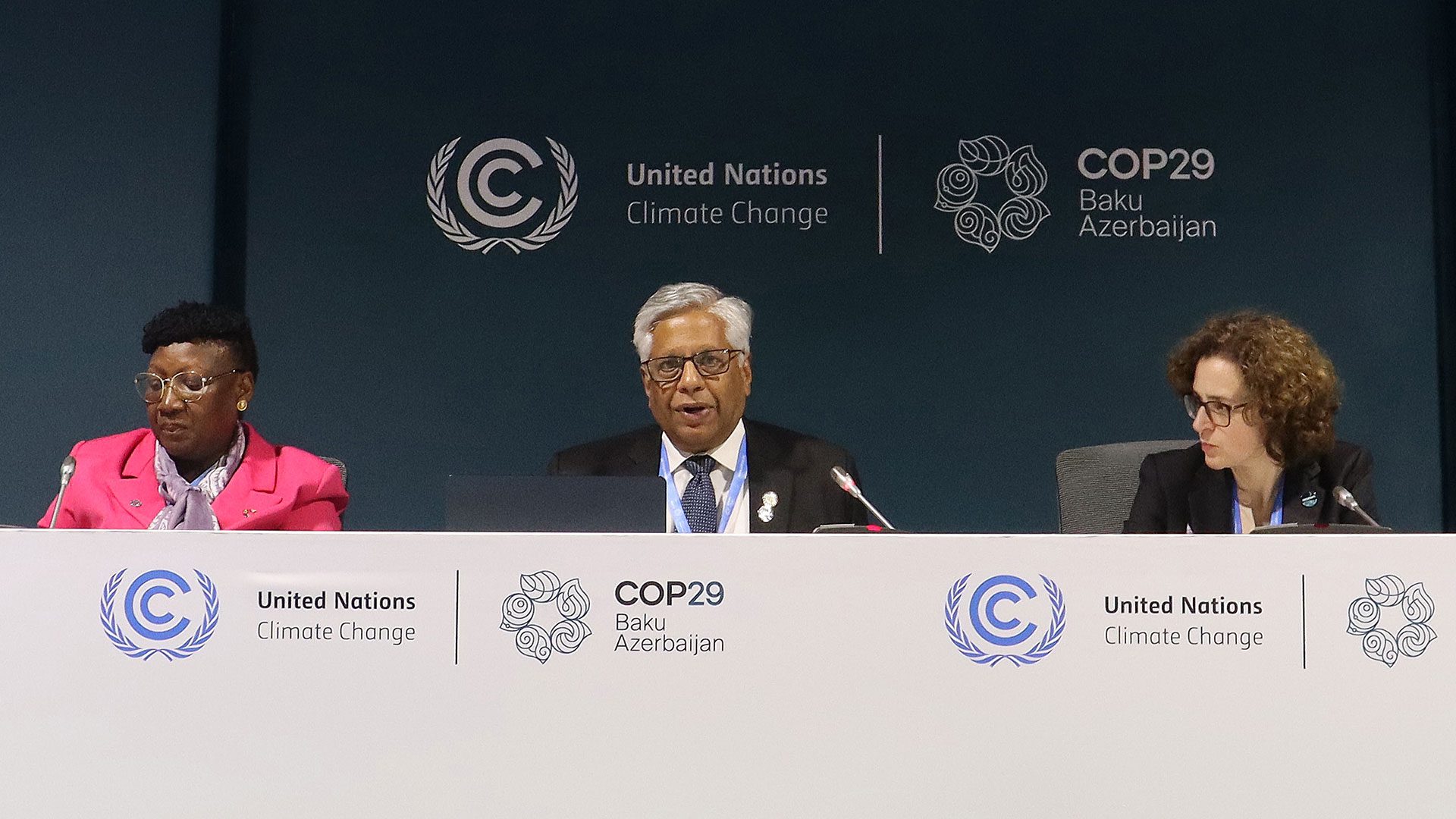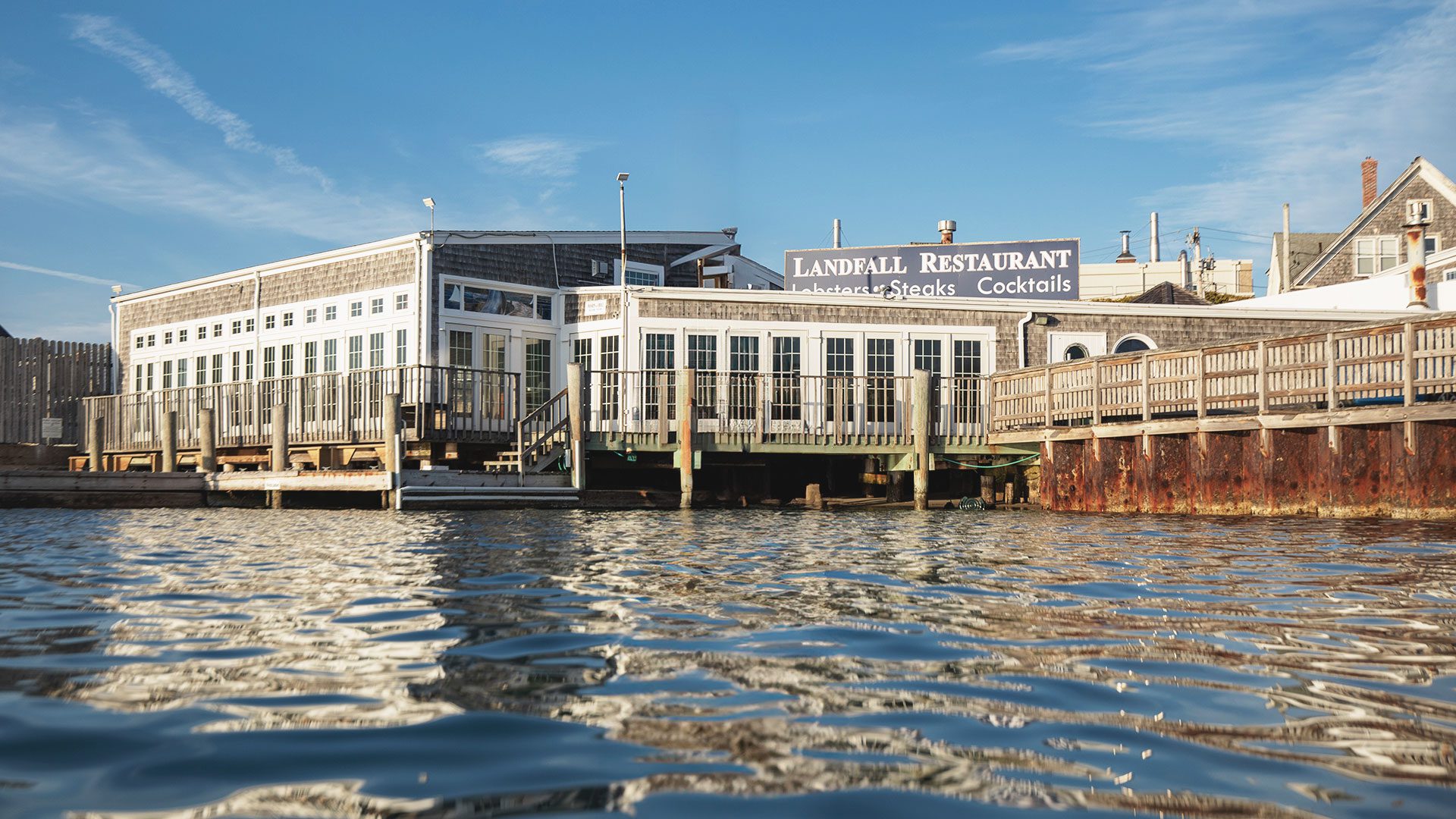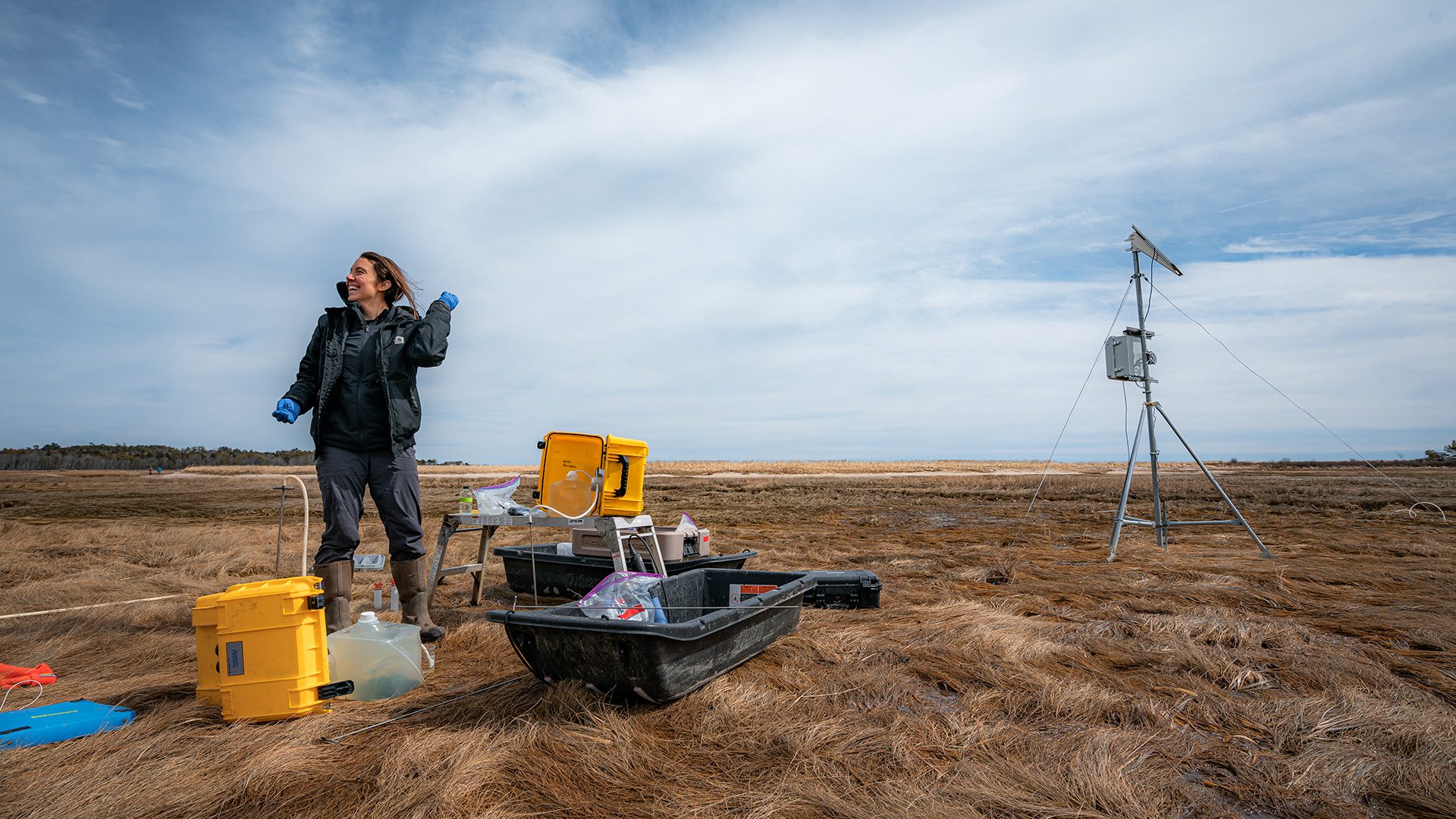
5 Takeaways for the Ocean from the COP29 Climate Conference
Explore the key outcomes from this year’s UN Climate Conference
Estimated reading time: 4 minutes
With the ink barely dry on an agreement for wealthy countries to provide $300 billion annually to developing countries for climate mitigation and adaptation, let’s take a look back at key takeaways from the 29th Conference of the Parties (COP29) for the ocean.
Bringing the blue to the Blue Zone
Potential ocean-based climate mitigation and adaptation solutions were highlighted in pavilions throughout the inner “Blue Zone” of the conference, not just at the Ocean Pavilion, and during side events every day. National delegations appear to be recognizing the importance of the ocean, albeit gradually, through solution-focused events and in finance negotiations for its central role in the Earth’s climate. In the same way, the Ocean Pavilion once again served as the official home of ocean-minded delegates and hosted a rotating roster of high-level visitors, including President Surangel Whipps Jr. of Palau, the UN Secretary-General’s Special Envoy for the Ocean Peter Thomson, UNEP Executive Director Inger Anderson, and Bloomberg Philanthropies Antha Williams, among others.
Connecting the COPs—and beyond
This year marked the first that all three Rio conventions—climate, biodiversity, and desertification—held conferences of the parties in the same calendar year. The Ocean Pavilion in Baku seized hold of this opportunity to elevate the importance of the ocean to achieving objectives laid out in all three conventions—the so-called Rio Trio. In addition, this year serves as the start of what some are referring to as a “blue thread”: a set of initiatives and conferences that includes the recent Ocean20 Communique released at the G20 meeting hosted by Brazil in the first week of COP29; the upcoming UN Ocean Conference in Nice, France, in June; and COP30 in Belém, Brazil, which is already being billed as the “nature COP.” To secure both ends of the blue thread, WHOI signed a memorandum of understanding with the Brazilian state of Pará (the home state of Belém) on behalf of the pavilion partners, underscoring a commitment to host an Ocean Pavilion in the Blue Zone of COP30.
Reading between the lines
Speaking in plenary session, COP29 president Mukhtar Babayev announced that Azerbaijan did not intend to produce a “cover text” for COP29, a front-page document summing up the main outcomes of the summit. It was hoped that a cover text would provide a place to reinforce a pledge to transition away from fossil fuels agreed at COP28, and to expressly recognize the importance of the ocean in humanity’s shared climate future. The other options for such language—the Global Stocktake and adaptation and finance negotiations—are extremely technical and broad, making them an unlikely home for such a call-out. However, the final communique from the conference reaffirmed the language of COP28’s cover text, meaning the ocean was included without being specifically mentioned.
Reaping what was sown
The 2024 Ocean and Climate Change Dialogue, a process established in the wake of the 2019 UNFCCC Special Report on the Ocean & Cryosphere, was reported in the opening plenary session at COP29 and was the focus of an official side event later that week. This year’s dialogue, organized by Chile and Canada, included more than 300 case studies and best practices linked to two key themes: marine biodiversity conservation and coastal resilience, and technology needs for the ocean. The side event included presentations and interventions from nearly a dozen parties and was well attended by delegation members. This demonstrated strong momentum and widespread support for the continuation of the dialogue process among party and non-party stakeholders alike.
What about the U.S.?
Election results in the U.S. were still just hours old when the first delegations began arriving in Baku on November 11. The likelihood that President-elect Trump will once again pull out of the Paris Agreement was a topic of conversation throughout the conference, but the message from the U.S. delegation was clear: The U.S. is not going to disappear from the international climate stage and will not shirk its responsibilities as the world’s largest economy and chief innovator of climate solutions. Despite this, the U.S. presence at COP is likely to be reduced beginning with Belém in 2025. Any reduction in commitments by the U.S. on emissions goals could empower other nations to similarly step back from existing or future commitments, making the Ocean Pavilion and our partners even more important as a voice for science-based climate action in coming years.






